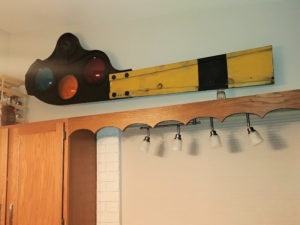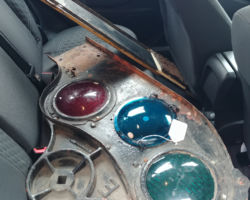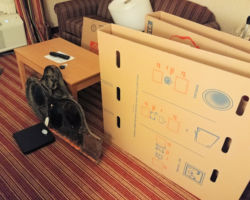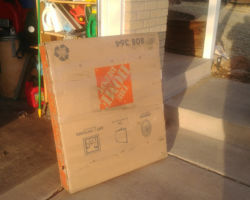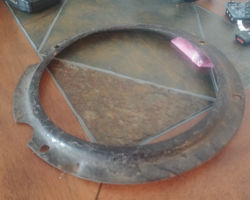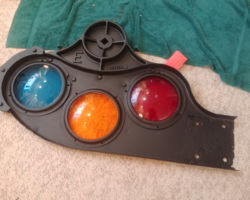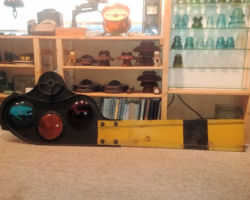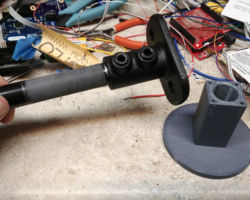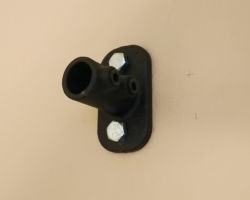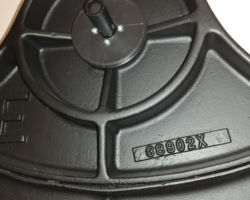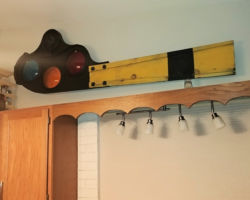Finding the Blade
In February 2019, I had to head for Memphis for… eh, professional reasons? Still a project I can’t talk about. But, being me, I added a few days on both sides for general railfanning, antiquing, and getting into trouble. Everybody else was flying in Monday, meetings Tues-Thurs, and flying home on Friday. I decided to fly in on Friday, have a three day weekend, three days of meetings, and another three day weekend before flying home Sunday night.
The Friday-Saturday after the meetings was largely supposed to be rainy and miserable, so any truly railfanning was probably off the list. I decided I’d drive around, hit up some antique stores, and try to make it into Nashville by Saturday night to catch some music.
What I didn’t anticipate was finding a 70 pound relic that needed to be boxed and shipped home. But that’s just what happened. A completely impromptu stop at Mantiques in Hazel, KY found a beautiful old semaphore blade from a Union Switch & Signal type S or T-2 upper quadrant semaphore signal. (This would date to 1906 to maybe the 1930s at the latest, as by that point railroads had converted almost entirely to color light signals.)
It needed work – there was quite a bit of rust, only one roundel was the correct color and lens type – but finding one in decent shape is getting significantly tougher, and the guy working the counter made me an offer on price that I couldn’t refuse. There was no way I was going to be able to pack it as checked luggage, so shipping was the only option. So we got a couple wrenches and removed the bolts between the blade and the spectacle and hub (the heavy chunk that holds the roundels and connects to the square drive shaft). None of the four actually backed out – the old iron sheared off in each case. These were, if not the original bolts, very, very old. That’s what leads me to believe that while the roundels weren’t correct or original to the assembly, the blade almost certainly was.
In Clarksville, TN, later that evening, I got a huge Home Depot box meant for moving flat screen TVs, a bunch of bubble wrap and tape, and the cheapest scale I could find. Half an hour later I had the thing all boxed up and back in the car, and it was off to FedEx Office to put the thing in the system. It was five minutes to closing and I walk in with this 70lb huge box. He’s not exactly thrilled to see anyone that close to closing to start with, and that lack of enthusiasm goes through the floor when he realizes this heavy, awkward box is employee non-revenue shipment. Sorry dude…
Restoration
Once home, I took everything apart carefully and figured out what I needed. Thanks to eBay, it was pretty easy to find new old stock yellow and red 8-3/8″ glass lenses. The blue one – which appears green once you figure in the color of an incandescent lamp illuminating it – seemed to be correct. A call out to some of the signal collector groups found me a couple more retainer rings, since one of mine was missing and one of the others was badly bent up. Somebody offered me a set of three for a decent price, so I just took the whole set. The blade itself was original paint and in decent shape, so I just set it aside. The spectacle and hub, however, were rusty and had probably nearly a century of flaking paint on them. Those would need some help.
Once I had the retainer rings in hand, I sent all of them and the spectacle/hub assembly off to my local powder coater for sandblasting and coating with a good matte black. The metal behind where the blade had attached (with a felt gasket between) had severely rusted from years of trapped moisture, but he did a good job carefully blasting it and saving as much metal as possible. A couple weeks later and it was back in the house, at which point it was a simple matter of installing the roundels and connecting the blade using all new black oxide-coated bolts/washers/nuts from McMaster-Carr (where else?).
Mounting
Looking around the house, the best place I found to put the 5+ foot blade was above my kitchen cabinets, as I had a wide chunk of open wall that wasn’t terribly tall (sloping ceiling), so the blade fit nicely.
Mounting it to the wall was actually pretty simple once I figured out how I wanted to do it and where I wanted to put it. I came across some products by Steel-tek at Lowe’s one day while looking for something completely different. They make these nifty modular powder-coated steel pipe pieces and fittings for building things that don’t need the strength of a truly fabricated frame, but still need to be strong and durable. One of the things I found was a two-bolt wall flange (part 683-204HC) and a 6″ piece of 3/4″ black pipe. Perfect! I’ll just 3D print an adapter for the square hole in the semaphore, and it’ll mount right to the wall.
My initial idea was to sand down the pipe and use high strength epoxy to hold the adapter to the pipe. That would prevent the blade from rotating, and no further support would be needed. That didn’t work at all. The torque around the shaft almost immediately broke the epoxy free upon mounting. So we went with plan B – use a little fishing line and an eye-bolt to suspend the end of the blade. (Okay, that’s really plan C. Plan B was put a beer glass under it until I could find some fishing line.) The thing is so well balanced around the shaft that it just takes the lightest tough at the blade end to hold it up.
If you’re looking to do something similar, I’ve put the two pieces of the hub mount on Thingiverse. The screws that hold them together are tapped for 6-32.
